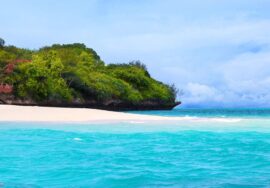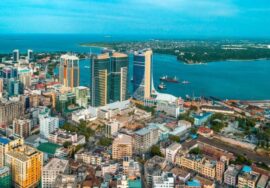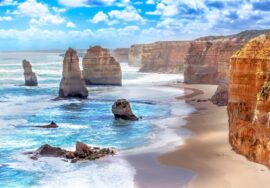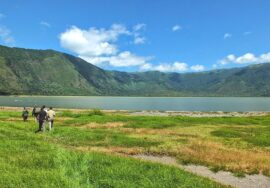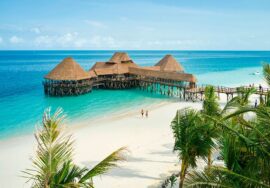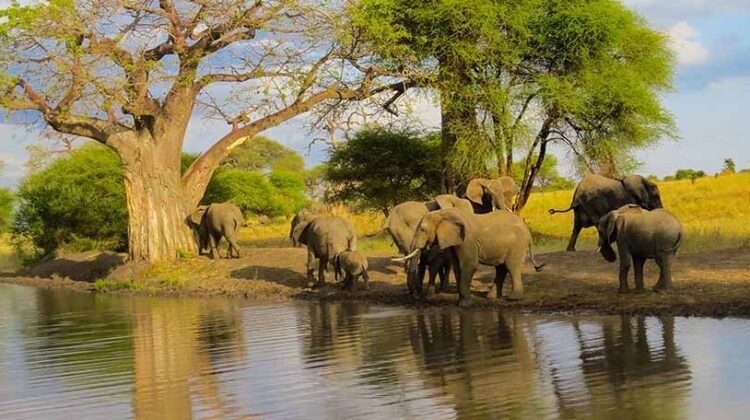
Tarangire National Park
Tarangire National Park is a beautiful and peaceful park in Northern Tanzania that is situated for a short distance away from the major safari route. One of its most well-known attractions is the elephant migration, as well as the birding and genuine safari atmosphere. The vast majority of tourists that visit the area either do not visit Tarangire at all or only spend a few hours inside the park, which results in large portions of the park remaining mostly unexplored.
This seasonal Tanzania safari park is a small jewel on the Northern safari circuit, especially if you are a fan of elephants. It features a game viewing area that is almost ten times larger than the game viewing area at Manyara National Park, which is located nearby, and it has an extraordinary concentration of animals from July through October.
When it comes to the Northern circuit, Tarangire is nothing short of a surprise. Tarangire National Park, which is frequently overshadowed by the Serengeti and the Ngorongoro Crater, is home to substantial animal populations during the peak months of the year, although it receives a fraction of the number of visitors that any of the other Northern parks do. The environment and ecosystems here are very distinct from those seen in other parks, and safaris here are excellent from July through October all the way through October.
Surprisingly, Tarangire is the largest park in the region, and it offers visitors the most peaceful atmosphere for watching wildlife of any game park in the area. Lodges such as Swala and Oliver’s Camp are the ideal places to stay in order to explore this isolated region and truly get away from any other travelers. The South of Tarangire is a particularly calm region. All things considered, it is an excellent little park that provides a great deal of value in comparison to its neighbors and is an extremely wonderful choice for getting away from it all.
Taking a safari through Tarangire National Park – The Wildlife
It is almost as diversified and reliable as the Ngorongoro Crater when it comes to the number of wildlife that can be seen along the Tarangire river during the dry months. The bulk of the game that lives in and around the park follows a localized movement pattern, which helps to maintain the ecosystem’s equilibrium.
This pattern is followed by the majority of the game. Due of this, Tarangire is exceptional during the season, but its quality is uncertain for the rest of the year. The park is home to up to 3,000 elephants during the busiest times of the year, making them the primary draw for visitors.
During the peak season, there are also a significant number of wildebeest and zebra, as well as additional animals such as giraffe, buffalo, Thompson’s gazelle, greater and lesser kudu, eland, leopard, and cheetah. Although viewings of the dwarf mongoose, oryx, and generuk are extremely uncommon, these animals are the park’s most prized possessions. It is widely considered to be one of the best places in Tanzania to go birdwatching.
The Activities Available at Tarangire National Park
Despite the fact that Tarangire safaris are the most popular activity, staying outside of the park allows you the prospect of walking and watching the night safari. In spite of the fact that there are no boat safaris on the rivers in this area, Oliver’s Camp provides exciting fly camping adventures and excellent walking safaris opportunities.
Recently, night safaris have been introduced within the park itself by both Oliver’s Camp and Swala at the same time. You should ask us for further information because the regulations in this area appear to change on an annual basis.
Do you have permission to drive at night in Tarangire?
The Tarangire National Park permits nighttime driving. However, some lodges do not provide it since they have not yet established a relationship with TANAPA. When it comes to night drives, your particular lodge will not be able to provide them if it is located outside of the National Park. Before making a reservation, it is important to determine whether or not the lodge you are considering has this feature, especially if it is something that is on your wish list.
When should you go to Tarangire?
There is a remarkable opportunity to observe wildlife throughout the months of July through October; however, during the remaining months of the year, the majority of the animals leave the park and move to the floor of the Rift Valley and the grazing pastures of the Masai steppe. Since this is the case, we would warn tourists not to anticipate huge concentrations of game during the off season months; nonetheless, we would still recommend coming here to those who wish to avoid the crowds.
Providing lodging, the Tarangire Safari Lodges offers We have always been of the opinion that staying within the park itself is the best option, despite the fact that there are a number of lodges located in the vicinity of the boundary of Tarangire.
Swala and Oliver’s Camp are the most luxurious options available within the park. Kuro, on the other hand, is one of our most cherished authentic options. It is a camp that is not only incredibly well-managed but also features a stunning interior design. It is a wonderful place to stay, and everyone who visits it just tells nothing but positive things about it. Despite the fact that it is situated outside of the park, the Tarangire Treetops is without a doubt one of the most distinctive accommodations in Tanzania due to the fact that its stunning suites are elevated into the trunks of old baobab trees.
Since the Tarangire Sopa is a larger hotel, we would suggest that you go with a safari choice that is more traditional and authentic in order to make your stay as memorable as possible.
Which season is ideal for a trip to Tarangire National Park?
During the dry season, which runs from June to October, the best time to visit Tarangire is definitely during the dry season because that is when the game viewing is at its peak. The months of December through March are often the worst for tsatse flies, which means that even while this is a fantastic time to visit the Serengeti to witness the calving of wildebeest, it is recommended to avoid heading to Tarangire at this period.
If you would like some further background information, you can read the Cadogan Guide to Tanzania and Zanzibar – Tarangire Chapter, which was written by one of our directors, Annabel. While we are working hard to make our website as comprehensive as possible, if you would like some additional information, you can read it. It is possible that some of the information may be slightly out of date because the most recent version was released in 2005; but, in general, it is as comprehensive as they come.
Tanzania is not the only country that we are familiar with!
The most effective way to acquire additional information about Tanzania is to give us a call and have an objective conversation with us. Although we have a strong affinity for Tanzania, we also have a strong affinity for the rest of Africa and have specialists in all of the major safari countries. We would appreciate it if you could send us an email or give us a call if you are still unsure about where you would like to go.

